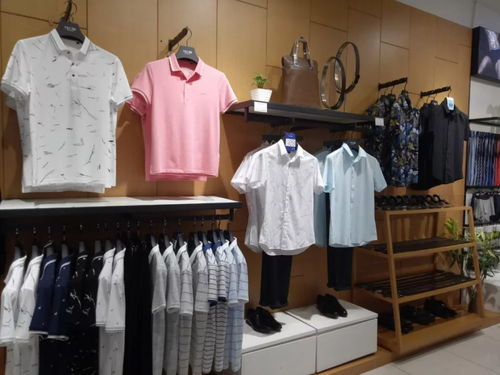The Progress and Challenges of China-ASEAN Textile Industry Cooperation
: Progress and Challenges of China-ASEAN Textile Industry Cooperation,Abstract:,China and ASEAN countries have been engaged in textile industry cooperation for many years, which has not only promoted the development of the Chinese textile industry but also benefited ASEAN countries. This paper analyzes the progress and challenges in this cooperation, including the current situation of cooperation, the main issues faced by the cooperation, as well as the future development direction of the cooperation. The research results show that although there are some achievements in cooperation, such as increasing market share, technological innovation, and export expansion, the cooperation still faces challenges such as low-end product competition, high labor costs, and trade protectionism. Therefore, it is necessary to further strengthen cooperation mechanisms, optimize cooperation strategies, and promote the sustainable development of the China-ASEAN textile industry cooperation.
I. Introduction China and ASEAN countries have been working together in the textile industry for many years, which has greatly promoted the development of both sides' economies. In this article, we will discuss the current situation of China-ASEAN textile industry cooperation, its advantages, challenges, and future prospects.

II. Current Situation of China-ASEAN Textile Industry Cooperation China and ASEAN countries have established a strong partnership in the textile industry. The Chinese textile industry has been exporting to ASEAN countries for many years, and the trade volume has been increasing year by year. According to the data from the China Association of Textile Importers and Exporters, the trade volume between China and ASEAN countries reached $13.5 billion in 2019, an increase of 10% over the previous year.
III. Advantages of China-ASEAN Textile Industry Cooperation
-
Economic Benefits The textile industry cooperation between China and ASEAN countries has brought significant economic benefits to both sides. For example, the textile products exported from China to ASEAN countries have helped increase their foreign trade volume and promote their local industries. At the same time, the Chinese textile industry has also benefited from the import of ASEAN countries' textile products, which has increased the diversity of its product range and enhanced its competitiveness in the global market.
-
Technological Exchange China and ASEAN countries have also exchanged technological knowledge and experience in the textile industry. For example, the Chinese textile enterprises have learned a lot from ASEAN countries' advanced technology and management experience in recent years. These exchanges have not only improved the quality and efficiency of Chinese textile products but also promoted the development of ASEAN countries' textile industries.
IV. Challenges of China-ASEAN Textile Industry Cooperation
-
Trade Protectionism In recent years, there have been some instances of trade protectionism in China and ASEAN countries. For example, the Chinese government has imposed tariffs on some imported textile products from ASEAN countries, which has affected the trade balance of the two sides. This issue needs further discussion and negotiation to resolve.
-
Market Competition With the rapid development of the global textile industry, the competition in the market has become increasingly fierce. The Chinese textile industry faces strong competition from other countries, especially from developed countries such as the United States and Europe. To maintain its competitiveness, the Chinese textile industry needs to continuously improve its technology and innovation capabilities.
V. Future Prospects of China-ASEAN Textile Industry Cooperation Looking ahead, China-ASEAN textile industry cooperation has great potential and broad prospects. Firstly, with the continuous improvement of trade relations between China and ASEAN countries, the trade volume between them is expected to continue to grow. Secondly, with the promotion of technological exchange and innovation cooperation, the quality and efficiency of Chinese textile products will be further improved. Finally, with the joint efforts of all parties involved, the textile industry cooperation between China and ASEAN countries will play an even more important role in promoting regional economic development and shaping the global textile industry landscape.
随着全球贸易的深入发展,中国与东盟之间的纺织品贸易日益繁荣,本篇报告旨在探讨中国东盟纺织品的发展现状、挑战与机遇,并辅以案例分析,以帮助读者更好地理解这一领域的现状和发展趋势。
中国东盟纺织品发展现状
市场规模与增长

中国和东盟在纺织品贸易领域具有广阔的市场前景,根据统计数据,中国已成为东盟最大的纺织品进口国之一,东盟国家也在积极拓展纺织品出口市场,寻求更多的商机。
贸易合作与政策支持
双方在贸易合作方面取得了显著成果,中国向东盟提供了大量的优质纺织品,而东盟国家也在寻求与中国在纺织技术、品牌、营销等方面的合作机会,双方在政策上也加强了沟通与合作,共同推动纺织品贸易的发展。
产业链与供应链
中国东盟纺织品产业链涵盖了原材料采购、生产加工、品牌营销等多个环节,双方在产业链的各个环节都进行了深度合作,形成了紧密的供应链关系,这不仅促进了贸易的顺利进行,也提高了产业链的整体效益。
中国东盟纺织品面临的挑战
贸易保护主义压力
随着国际贸易环境的不断变化,贸易保护主义压力逐渐显现,一些国家可能出于保护本国产业和市场的考虑,对来自其他国家的纺织品设置贸易壁垒,这给双方在纺织品贸易中带来了挑战。
技术壁垒与知识产权保护
在纺织品贸易中,技术壁垒和知识产权保护也是一个重要的问题,一些东盟国家可能对某些技术或品牌存在疑虑,这可能会影响双方的贸易合作,双方需要加强技术交流与合作,共同应对这些挑战。
市场竞争加剧
随着全球纺织品的竞争日益激烈,双方需要在竞争中寻求优势,这需要双方加强品牌建设、产品质量提升等方面的努力,以提升自身的竞争力。

中国东盟纺织品的发展案例分析
某东盟国家与中国的纺织品合作案例
该东盟国家与中国在纺织技术、品牌、营销等方面进行了深度合作,双方共同研发新产品,提高产品质量,扩大市场份额,这种合作不仅促进了贸易的顺利进行,也提高了双方的竞争力。
某地区纺织品市场的现状与趋势分析
该地区是一个纺织品市场较为发达的区域,双方在该地区进行了广泛的贸易合作,双方共同开发新的市场渠道,提高品牌知名度,加强市场营销,这种合作不仅促进了该地区的纺织品贸易发展,也推动了整个地区经济的发展。
未来发展趋势与展望
未来发展趋势:多元化、智能化、绿色化
中国东盟纺织品的发展将更加多元化、智能化和绿色化,双方将更加注重产品质量和品牌建设,加强技术创新和人才培养,推动绿色纺织品的研发和应用,双方也将更加注重环境保护和可持续发展,实现经济、社会和环境的和谐发展。
展望未来合作:加强政策沟通与合作,促进贸易便利化
展望未来,双方将继续加强政策沟通与合作,共同推动纺织品贸易的发展,双方可以加强技术交流与合作,共同应对贸易保护主义压力和技术壁垒等挑战,双方也可以加强贸易便利化建设,提高贸易效率和质量。
Articles related to the knowledge points of this article:
The Art of Fabrics:A Journey through the World of帆里纺织品
Exploring the World of Yarn:A Journey to Understanding Yiyi Textiles



